 |
ChessBase Reviews |
Last updated 21 July 2006

| index |
CDs, DVDs, Software Part 26
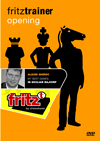
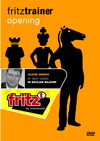
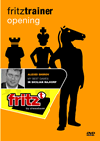
My Best Games in the Najdorf / Sicilian / Spanish By Alexei Shirov
Alexei Shirov is one of the great talents of the modern chess era, reaching 2700 level before he was 20. ChessBase have done well in getting Alexei to do these DVDs which give a first class insight into the handling of these openings at the highest level.
This series comes on 3 separate DVDs covering the Spanish, the Sicilian and the Najdorf. Each uses ChessBase’s Chess Media System. Each DVD has a separate program to allow you to use the multimedia format but you can also view them in one of the newer playing programs or ChessBase 9. The media comprises of a video showing the lectures by Alexei alongside seeing the positions played through on the board. All in all an excellent teaching and learning system for chess. The variations covered on each DVD are as follows:
My Games in the Spanish:
Introduction (09:04), Steinitz Variation (41:10), Berlin Defence (37:04), Open Spanish (42:08), Moeller and
Archangelsk Defence (26:22), Anti-Marshall-System 1 (32:05), Anti-Marshall-System 2 (15:50), Marshall Gambit (20:42),
Modern Chigorin Defence (34:55), Flohr / Saitzev Variation (34:06). More than 4.5 hours pf private tuition.
My Best Games in the Sicilian:
Introduction & Kan Variation (40:33), Taimanov Variation (34:51), Paulsen System (30:03), Sveshnikov Variation
(23:10), Rossolimo Variation 1 (31:04), Rossolimo Variation 2 (30:48), Richter-Rauzer Attack 1 (16:38), Richter-Rauzer
Attack 2 (23:19). Total playing time: 3h 50 min.
My Best Games in the Sicilian:
Introduction (01:58), Najdorf with 6.Be2 (29:56), Najdorf deviations 1 (21:52), Najdorf deviations 2 (15:09),
Scheveningen System (45:45), Keres Attack 1 (14:03), Keres Attack 2 (20:45), Keres Attack 3 (23:01), Keres Attack
4 (29:46), giving more than 3 hours entertainment and enlightenment.
Each of the DVDs is full of insightful stuff so you should get plenty of tips to help you improve your handling of the variations under investigation. They should also prove useful for Correspondence play as a thorough understanding of plans and strategies in lines is essential if you are to find the best moves.
System requirements: Pentium-Processor at 300 Mhz or higher, 64 MB RAM, Windows 98 SE, Windows 2000, Windows XP, Windows Media Player 9.0, DVD drive.
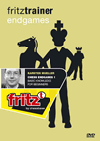
Chess Endgames 1 By Karsten Müller
This is a very refreshing DVD from one of the world's best endgame experts. Quite a few Correspondence Chess players tend to not pay much attention to endgame knowledge as they assume they can always look up the basic technique when they come to the endgame. This is a big mistake as you should be steering your game towards a winnable endgame right from the start. As such there are a lot of CC players out there who will benefit from gaining a thorough grounding on endgames which you will get from this DVD. Know what wins at the end will have a big input on how you progress your game in the openings and middlegame.
The topics range from elementary endings such as mating with the Queen, with Rook and with two Bishops and mating with bishop and knight. The DVD also teaches the fundamentals of pawn endings, knight vs. pawns endings, bishop vs. knight endings, queen vs. pawns endings plus knight and bishop endings, including endings with bishop of the same and of opposite colour. Those who have always felt that studying the endgame from textbooks is too uninspiring and too arduous, will enjoy this DVD and certainly profit from it. Video running time: 5.5 hours.
You will probably use this DVD again and again over the years. Included on the DVD is a ChessBase 9.0 Reader.
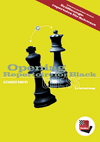
Opening Repertoire for Black By Alaxander Bangiev
This CD begins after the openings moves 1.e4 g6 2.d4 Bg7 3.Nc3 c5 from which the play can easily head into the Sicilian, Benoni or English openings. IM Bangiev uses his methodology of the squares strategy. The unified system which he advocates is based on a setup with g6, Bg7 and c5, which can easily be applied as a reply to the main white openings.
The author uses five instructional texts and 149 games to cover each of these variations.
The CD includes a huge database of 103419 games with 1254 of them containing annotations and a test file with 66 exercises to test your understanding of the various openings. The ChessBase Reader is also included so you don't need the full version of ChessBase. All in all the advice given will give the reader a sound understanding of the various possibilities available from these opening variations.
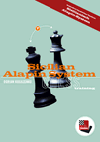
Sicilian Alapin System By Dorian Rogozenko
I used 2.c3 against the Sicilian in quite a few of my CC games with reasonable success but as time went on it became more difficult to spring a surprise on an opponent.
The CD has 54 database texts, 500 games annotated by the author, a large database with 75,000 games, a training database and the ChessBase Reader.
This CD by Dorian Rogozenko can help you construct a strong repertoire against the Sicilian because this is a major new work, which reflects the latest state of theory and even goes beyond it. A lot of the theory of this opening has been progressed by CC players and you will find their games here.
1.e4 and Sicilian CC players should definitely get this CD as a one point reference to the variations they are likely to meet in their games.
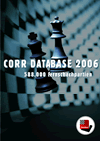
Corr Database 2006 By ChessBase
Personally I think this a must for serious correspondence chess players and I also think a lot of OTB players could learn a lot from the games contained on this CD. You can get CDs with more CC games or download databases from the internet which include a lot of rubbish such as games which were played over 5 minutes on the net. You pay your money (or not) and make your choice. I think the quality of the games is worth the money.
Corr Database 2006 is an extensive collection of correspondence games, featuring classical correspondence games played by mail as well as email games.
The CD contains 588,000 games from 1804 until 2006 including all games of the correspondence chess world championships 1-18, correspondence chess olympics 1-15, correspondence chess european championships, national chamionships (AUS, CSR, DEN, GER, NED, USA) and memorials (1965 SUI jub75, 1991 FIN jub30, NED jub 25, NBC Millennium Email, ICCF 50th Jubilee Elite and ICCF 50th Jubilee World Champions). Corr 2006 also features a correspondence chess playerbase, which includes about 63,000 names.

Zap!Chess By Anthony Cozzie
I found this a very interesting chess program to play against but was soundly thrashed on each occasion. No surprise there as Zap!Chess did win the 2005 World Computer Chess Championship beating a number of top world champion programs from previous years.
This CD contains two versions: "Paderborn" and "Reykjavik". Reykjavik is the version that won the World Championship; Paderborn includes some ideas from the author's (is that the right way to refer to someone who writes computer programs?) work at Illinois. He himself is uncertain which one is better; you'll have to find that out for yourself.
The author says "The style of the program reflects my background as a computer engineer. Rather than developing clever search tricks that may or may not work, I concentrated on getting the most out of modern hardware. Zap!Chess contains one of the best parallel implementations in the world to run efficiently on multiple CPU systems, and it also uses 64-bit machines to their full potential. The program contains large amounts of chess knowledge, and like most modern programs it is tuned fairly aggressively – it knows where the opponent‘s king lives. This gives it an exciting style without being unsound. While the program is optimized for long time controls and big hardware, don‘t despair if you own a smaller system. Both versions come with an implementation of Singular Extensions, the famous Deep Blue search algorithm. They are disabled by default, but they increase the tactical strength of the program at the cost of positional strength."
Shredder
I’m currently having a good look at the latest versions of Shredder and rather than publish a quick review now I will leave it for a few weeks. That review will appear on our website in a few weeks time and the next magazine, but first impressions look good to me.